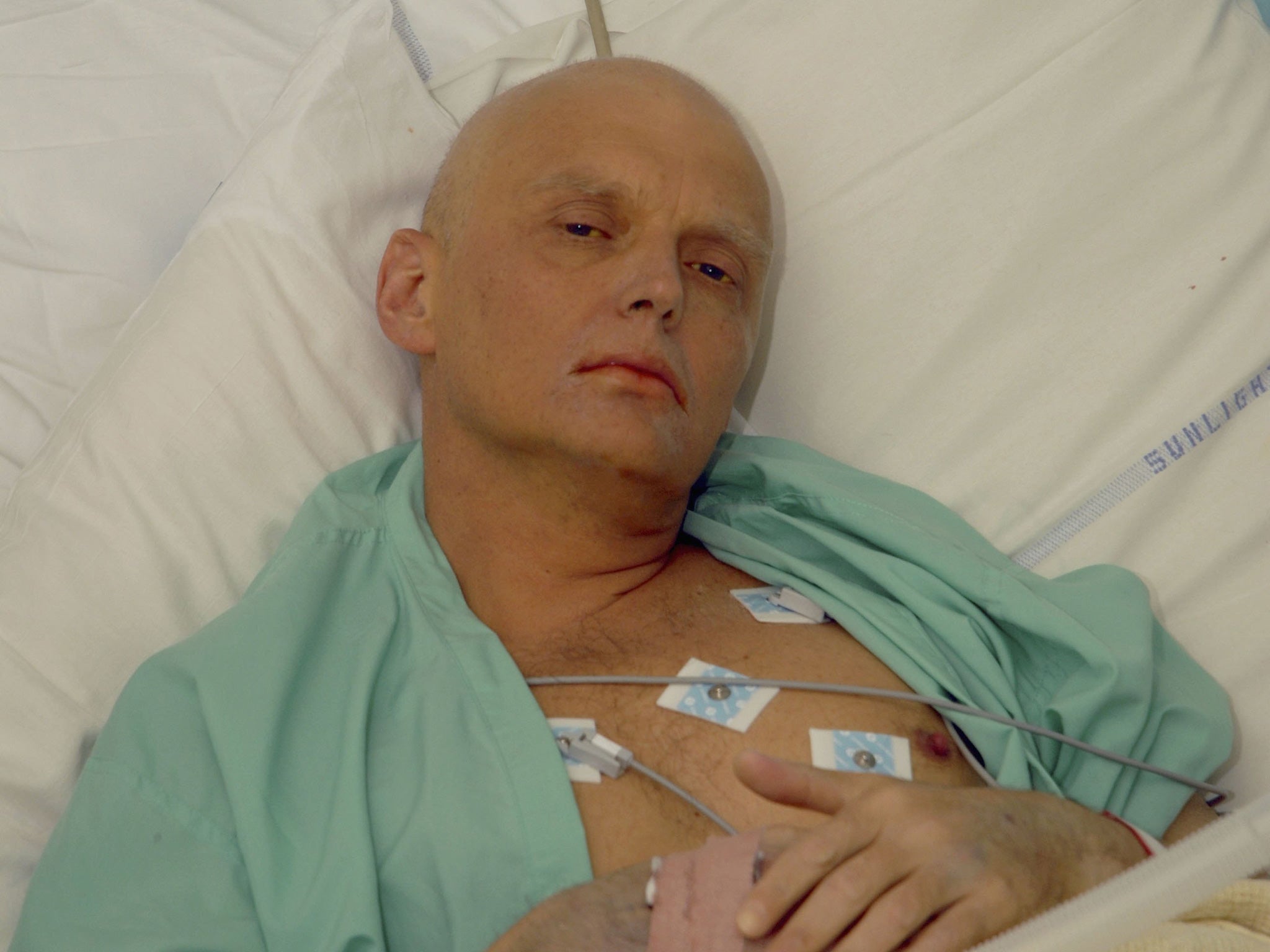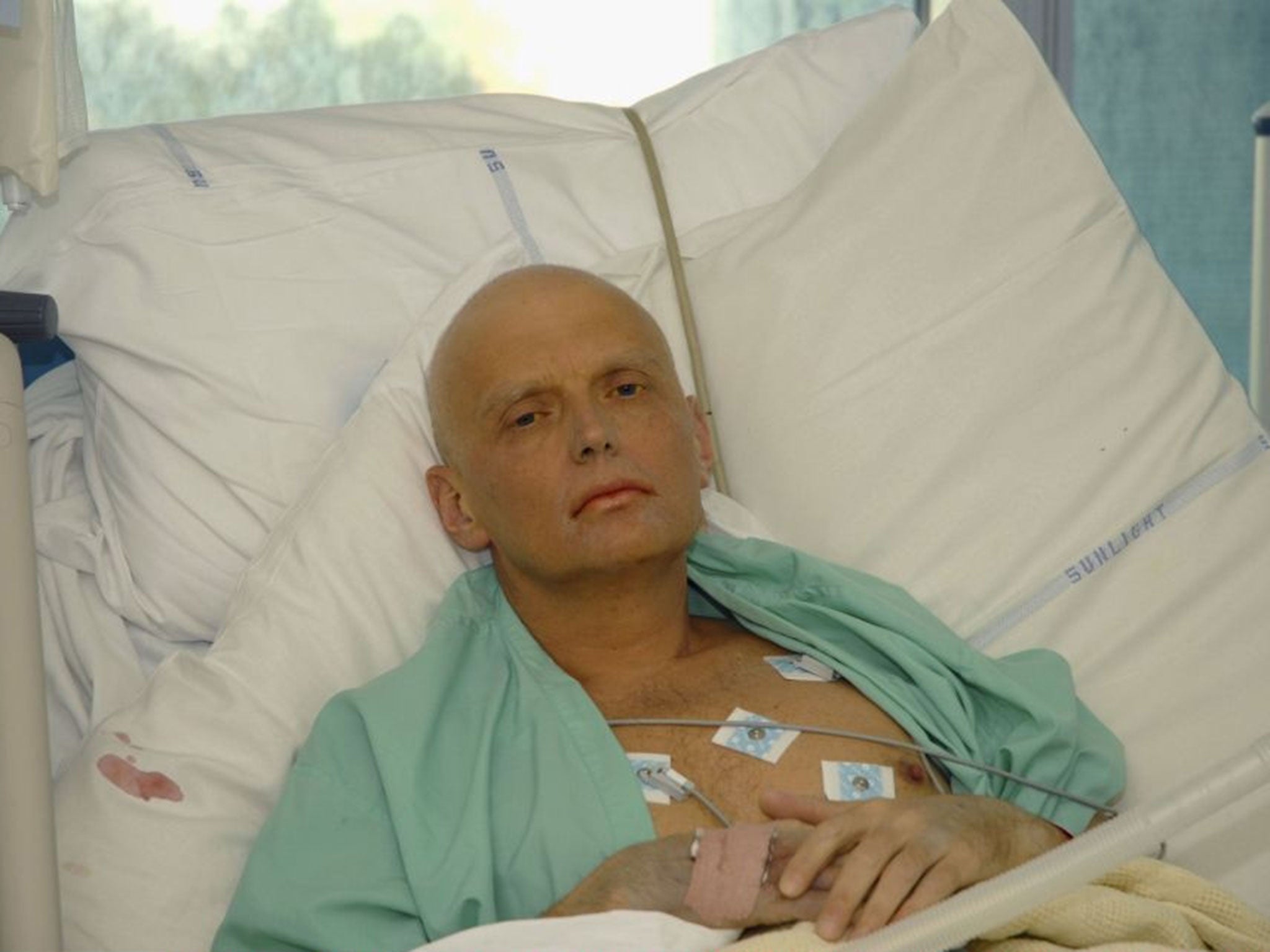Alexander Litvinenko: What does polonium-210 do to the body?
The former KGB agent is believed to have ingested polonium-210 at a hotel in west London

Your support helps us to tell the story
From reproductive rights to climate change to Big Tech, The Independent is on the ground when the story is developing. Whether it's investigating the financials of Elon Musk's pro-Trump PAC or producing our latest documentary, 'The A Word', which shines a light on the American women fighting for reproductive rights, we know how important it is to parse out the facts from the messaging.
At such a critical moment in US history, we need reporters on the ground. Your donation allows us to keep sending journalists to speak to both sides of the story.
The Independent is trusted by Americans across the entire political spectrum. And unlike many other quality news outlets, we choose not to lock Americans out of our reporting and analysis with paywalls. We believe quality journalism should be available to everyone, paid for by those who can afford it.
Your support makes all the difference.Almost a decade after Russian dissident Alexander Litvinenko died of radiation poisoning in London, a public inquiry has found that President Vladimir Putting “probably” approved his assassination.
A report into the case has concluded that ex-KGB agents Andrei Lugovoi and Dmitri Kovtun placed polonium-210 (Po-210) in the 43-year-old's teapot at the Millennium Hotel in Mayfair, likely under the instruction of Moscow's FSB intelligence service.

Several hours later, Mr Litvinenko was taken to hospital after complaining of feeling ill.
Some 17 days after this, his condition deteriorated and he was transferred to University College Hospital in central London. Mr Litvinenko died in intensive care six days later.
What is polonium?
Silver in colour, the metal originates from uranium ores in nuclear reactors or in low levels in the Earth’s crust. It is therefore one of the rarest elements in the world.
First discovered by Marie and Pierre Curie in 1898, it has a half-life – the term used to describe how long it takes for radioactivity to fall to half its value - of 138 days.
It is likely then that the polonium used to assassinate Mr Litvinenko would have been produced not long before his death.

How does the metal kill a person?
The body can only safely handle seven pictograms of polonium, according to the Royal Society of Chemistry (RSC). To put this into perspective, a microgram of Po-210, which is the size of a fleck of dust, would be enough to kill a person.
The RSC explains on its website that polonium could be added to a soluble salt and sprinkled in food or drink.
Once inside the body it spreads quickly, leaving reactive radicals in its path and taking electrons from molecules. It is therefore currently impossible to stop.
Radiation can also damage a victim’s DNA, affecting how cells replicate. But more serious poisoning can cause cells to die – a process called apoptosis.
What happened to Litvinenko’s body?
Doctors were able to diagnose Mr Litvinenko with radiation poisoning because he rapidly lost his hair and his immune system broke down.
Special machinery was then able to pick up that the behaviour of alpha particles in his body were characteristic of Po-210.
The polonium then caused multiple organ failure, and spread to the bone marrow.
Nausea, hair loss and throat swelling are also signs of polonium poisoning, NBC News reported.
Join our commenting forum
Join thought-provoking conversations, follow other Independent readers and see their replies
Comments